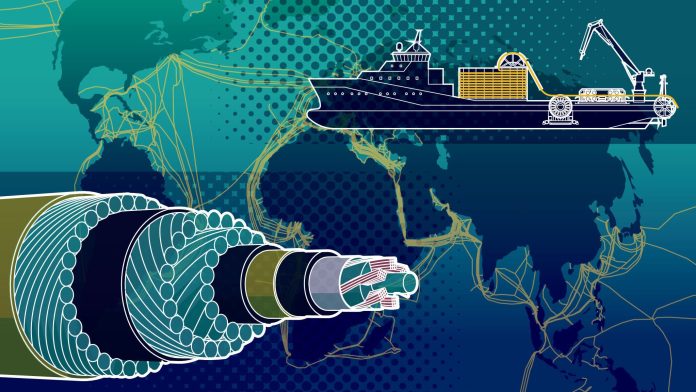In 2018, Amazon, Meta and China Mobile agreed to work together on a cable connecting California to Singapore, Malaysia and Hong Kong. But a series of maneuvers in Washington to block Chinese involvement in US cables led to China Mobile’s exit from the consortium.
Meta and Amazon submitted a new application for the system in 2021, this time with no Chinese investment, no connection to Hong Kong, and with a new name: Cap-1.
Then last year the application for Cap-1 was withdrawn altogether, even though most of the 12,000 km cable had already been built. According to two people with knowledge of the discussions, China’s initial involvement continued to pose a security risk to the US government.
“Hundreds of millions of dollars have been sunk in the Pacific,” said a person involved with the canceled project. Meta and China Mobile did not respond to requests for comment. Amazon declined to comment.
Over the past five years, as tensions between the two countries rose and fears of espionage risks mounted in Washington, the US government sought to tear apart an intertwined network of internet cables that had developed through decades of international cooperation.
The US managed to prevent Beijing from becoming a major player in the global submarine cable market. Chinese supplier HMN Tech has supplied or will supply equipment for just 10 percent of all existing and planned global cables, assuming the supplier is known, according to an FT analysis of data provided by consultancy TeleGeography. In the meantime, the French cable manufacturer ASN has supplied 41 percent and the American company SubCom 21 percent. Neither ASN nor SubCom responded to requests for comment.
And interviews with more than 20 industry executives suggest Washington’s campaign has resulted in a virtual ban on using a Chinese supplier across much of the industry, even on projects not involving the US. Some fear it could destroy the global internet as Chinese companies elsewhere begin to build their own cable networks.
“One of the biggest risks right now is that there will be branched networks. Does this create a system where there is no connectivity, with a quasi-Cold War, Eastern bloc against the West?” says April Herlevi, an expert on China’s foreign trade policy at the Center for Naval Analyses. “I don’t think we’re that far yet. . . But I worry that’s the direction we’re going in.”
Several countries, including China, Pakistan, Saudi Arabia and Russia, have openly expressed ambitions to create a more centralized internet infrastructure over which their governments would have greater control. They have also shown their willingness and ability to shut down access to specific websites or even the entire internet during times of political turmoil.
But US efforts to ban Chinese companies from the global internet backbone are struggling. Even as the US government wages its fiber-optic war on Beijing, Chinese-owned and crewed ships are still conducting complex repair work on US-owned fiber-optic lines, people with direct knowledge of such operations told the Financial Times.
Meanwhile, new analysis shows that more data is flowing between the US and China than at any time in history, even if the route between the two is often less direct than before. Several industry representatives point out that data can be intercepted even if the data storage infrastructure is not built by Chinese companies.
ig.ft.com
https://ig.ft.com/subsea-cables/














